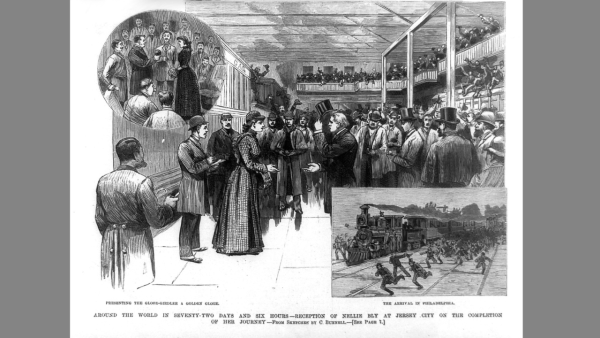How a 19th-century traveller circled the world in 72 days — and changed the future of travel
ETimes November 18, 2025 04:39 AM
 In today’s age, when we plan trips on a tight schedule, and have all the facilities available, it’s difficult to comprehend how people might have travelled centuries earlier. So, during the late 19th century, when travel was still arduous, slow and full of uncertainty, an American journalist Nellie Bly achieved what once seemed the domain of fiction: she circled the globe in just 72 days, proving that the world really could be swept around in what had been thought the stuff of novels.
In today’s age, when we plan trips on a tight schedule, and have all the facilities available, it’s difficult to comprehend how people might have travelled centuries earlier. So, during the late 19th century, when travel was still arduous, slow and full of uncertainty, an American journalist Nellie Bly achieved what once seemed the domain of fiction: she circled the globe in just 72 days, proving that the world really could be swept around in what had been thought the stuff of novels.
From fiction to realityBly, born Elizabeth Jane Cochrane, was already known for fearless investigative journalism. In 1888 she approached her editor at the New York World with a bold proposal: replicate the journey described in Around the World in Eighty Days (1873) by Jules Verne , and beat its fictional time of 80 days.

On 14 November 1889 at 9:40 AM., with only two days’ notice, Bly boarded the steamship Augusta Victoria from Hoboken, New Jersey, beginning a 24,898 mile journey that would take her across oceans and continents.
Her itinerary was ambitious: England, France (a stop to meet Verne in Amiens), through the Suez Canal, Ceylon (Sri Lanka), the Straits Settlements (Penang & Singapore), Hong Kong and Japan, then across the Pacific to San Francisco, via the U.S. railroads back east to New York.
Read more: Racing the clock: 72 days around the world
On 25 January 1890, at 3:51 PM, Bly’s train pulled into Jersey City, New Jersey. She completed her circumnavigation in 72 days, 6 hours, and 11 minutes, beating the fictional 80-day mark by over a week.
Her remarkable feat captured popular imagination: the New York World organised a public guessing contest of her arrival time; thousands gathered at stations along her route; when she landed, cannons reportedly boomed at the Battery in New York City.

Some of the key things to note are:Technology enabling the journey: Bly’s voyage came at a time when steamships, transcontinental railways and submarine telegraph cables had begun to knit the world together. The opening of the Suez Canal (1869), linking continents by sea, and an expanding railway network made such rapid circumnavigation conceivable.
Turning fiction into fact: Verne’s novel had posed the question of whether the world could be circled in eighty days. Bly answered it, in effect. Her success highlighted that global travel was entering a new era.
A woman breaking boundaries: For a solo female journalist to undertake, and succeed, on such a journey in 1889 was extraordinary. It challenged social conventions and inspired future travellers.
Read more:
All the challenges
The journey was anything but smooth. Major storms, seasickness, logistical delays, and the constant pressure of maintaining schedule all threatened Bly’s progress. Her luggage was minimal: a sturdy overcoat, a few changes of underwear, toiletries and cash in a bag tied around her neck. She travelled light, but with determination.
While Bly’s 72‐day record was surpassed a few months later by George Francis Train (67 days), her journey remains iconic. She proved that the world could be circled—and in a period that once belonged to legends, she made it real.
Her story still resonates for travellers today: the idea that bold planning, emerging infrastructure and personal courage can turn a seemingly impossible itinerary into reality. If you plan your next trip not just to mark a location but to test a limit, remember if Nellie Bly could do the unthinkable that time, then anything is possible.
 In today’s age, when we plan trips on a tight schedule, and have all the facilities available, it’s difficult to comprehend how people might have travelled centuries earlier. So, during the late 19th century, when travel was still arduous, slow and full of uncertainty, an American journalist Nellie Bly achieved what once seemed the domain of fiction: she circled the globe in just 72 days, proving that the world really could be swept around in what had been thought the stuff of novels.
In today’s age, when we plan trips on a tight schedule, and have all the facilities available, it’s difficult to comprehend how people might have travelled centuries earlier. So, during the late 19th century, when travel was still arduous, slow and full of uncertainty, an American journalist Nellie Bly achieved what once seemed the domain of fiction: she circled the globe in just 72 days, proving that the world really could be swept around in what had been thought the stuff of novels.

